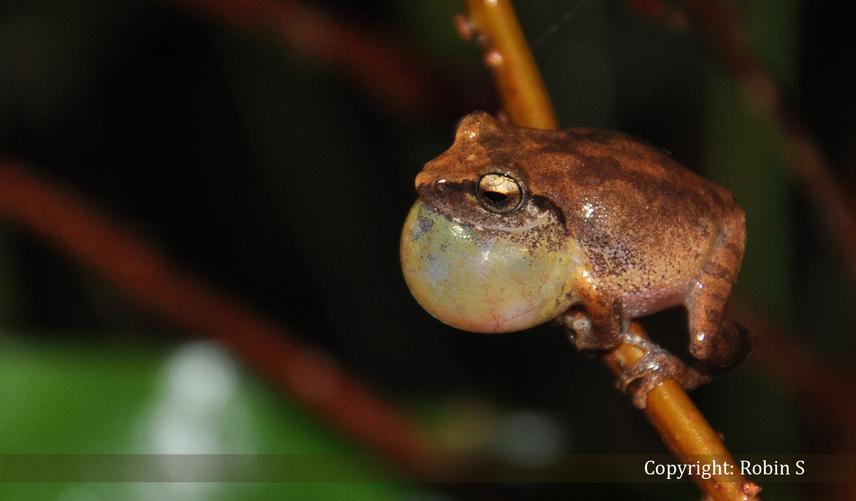Robin Suyesh
This project has two aims:
(i) assess the conservation status of the bush frogs in the genera Raorchestes and Pseudophilautus by carrying out an extensive field survey covering all altitudinal ranges and habitats and
(ii) produce an accurate biogeographic range maps for each species.

Pseudophilautus kani (Kerala).
Western Ghats, one of the world’s richest biodiversity hotspots, is home to 60% of 325 known Indian amphibian species. Anthropogenic activity has destroyed a large portion of these once extensive forests and threatens the survival of many of the endemic species. Amphibian conservation action plans are still in their infancy in India. There are currently 42 known species of bush frogs endemic to the Western Ghats taxonomically placed in two genera, Raorchestes and Pseudophilautus. The conservation status is unknown for almost half of the known species and our knowledge of most species is restricted to records from a single locality.
As part of my PhD, studying bioacoustics and conservation status of these bush frogs of the Western Ghats are two of my primary objectives. Bioacoustics is a reliable tool for species identification and can be effectively used to distinguish co-existing populations of different species in various localities. Call variation within phylogenetic framework can give the exact identity of even a cryptic species. I aim to effectively employ bioacoustics to help resolve taxonomic identities especially within species complex to determine biogeographical range of each of these endemic species.
The project output will provide much-needed information for making meaningful conservation status assessments and delimiting accurate biogeographical ranges of all the known species of bush frogs from the Western Ghats. The expected outcome of this work will be identification of species and the localities that are of immediate concern for conservation. These data will be available for policy makers to initiate relevant protection measures for species of immediate concern and threatened habitats containing the highest endemism and biodiversity. Resultant in-situ protection measures that may be framed to protect individual species or habitats can indirectly protect all other species reliant on that habitat. Integrating bioacoustics data with molecular evidence will help in identifying the cryptic diversity of bush frogs. There is likelihood that some of the currently known species are species complexes containing more than a single species. Thus proposed work will establish the true overall diversity of the Western Ghats bush frogs. Furthermore awareness programs will be held for local residents at the critical study sites to highlight the importance of amphibians and the need for conserving their habitat. Scientific publications and resultant national and international media coverage will also create essential public awareness and education.